Underground Labyrinth With Secret Passages, Tunnels In Dobrogea Plateau, Romania
A. Sutherland - AncientPages.com - In many cases, the world below us is just as fascinating as the ground we walk on. Across Europe, there is a hidden, often millennia-old subterranean realm of tunnels stretching from the north in Scotland leading down to the Mediterranean.
Limanu Cave's secret, and still unexplored passages and roads. The network gallery actually resembles a city street map, like the street network of an ancient city developed chaotically, thus the impression of an underground city. Image source
It is an underground world of never-ending tunnels, massive caves, and labyrinths dug by unknown ancient men. There are also underground labyrinths that have not been fully explored yet.
One is located about 52 kilometers from Constanța, historically known as Tomis, the oldest continuously inhabited city in Romania.
A Vast Underground City Where You Can Get Lost
This vast labyrinth of 12 hectares lies beneath the plateau of Limanu. Researchers started investigating the place in 1916 and discovered traces left by humans, carved walls and ceilings, and ancient ceramic fragments. Drawings and inscriptions in Roman and Cyrillic alphabets on the walls prove the cave was inhabited between the 1st century BC and the 10th century AD.
The labyrinth is vast, with a total length of passages of approximately 3.5 km. Dacians used it to hide from the Roman proconsul Marcus Licinius Crassus (c. 115 BC —53 BC), who played a vital role in transforming the Roman Republic into the Roman Empire. The cave's early inhabitants used a marking system to avoid getting lost.
Approximately 4,000 meters in length, Limanu Cave is the longest in Dobrogea. It has a chaotic branching of galleries, like the street network of an ancient city. Some researchers believe that at least some of the galleries were entirely dug by human beings, as there are tooling marks on the walls. Indeed, Limanu Cave represented an important human refuge, even since Dacian times.
The network of galleries resembles a city street map, like the street network of an ancient city developed chaotically, thus creating the impression of an underground city.
Remarkable Galleries
Some galleries have rectangular, very regular sections, and it seems humans carved them as signs of chiseling are visible. To avoid the collapse of ceilings, supporting walls and pillars were built in limestone slabs.
The drawings of galloping horses are of particular interest, while their riders have faces displayed from the front. Their silhouette and presentation resemble those of Dacian riders depicted on pottery discovered in many settlements inhabited by Thraco-Dacians.
This artwork belongs to the Roman-Byzantine period and the subsequent times. Other pictures show Christian religious symbols, letters, or words in the Cyrillic alphabet.
According to Ph.D. Adina Boroneant, "Vasile Pârvan" Institute of Archaeology, Romanian Academy, the Limanu Cave was a shelter for the local population until later, 10th-11th centuries AD.
Surveys have revealed archaeological material proving that local Dacians, even in that era, inhabited the cave. Existing evidence allows us to assume that a local Geto-Dacian authority ordered the maze of Limanu as a defense measure against the Roman danger." The account of Dio Cassius shows that the cave was a place of refuge, purposefully chosen and renovated, not some adventitious cavern," Ph.D. Boroneant writes in ”The Underground Labyrinth of Limanu” (”Labirintul subterrane de la Limanu”).
Tales Of Mysterious Sounds Coming From Underground Realms
Local stories mention strange and frightening wails like a prolonged high-pitched cry of grief, pain, or anger coming from the depths of the earth.
A scientific explanation for these strange sounds provided by speleologists is that the eerie wails are produced by the wind that sweeps through many underground galleries at Limanu. This noise affects the human psyche.
The cavern has a unique characteristic: although it is located on a complex of lakes and close to the Black Sea, it is so impenetrable that not even water can pass through.
The cave is also known as Caracicula (the old name of the Limanu settlement), Bats', or Icons' – due to some images carved in stone that once guarded the entrance.
Limanu Cave is one of the three habitats in Romania for horseshoe bats – Rhinolophus Mehelyi. The species decreased from over 5,000 specimens to about 300 individuals. However, ecologists warned about the vulnerability of the cave, which is a magnet for treasure hunters. Through their actions, they tend to destroy the fauna.
Being located near the border with Bulgaria, Limanu cave had the reputation of a tunnel carrying fugitives across the border, particularly during the communist time.
There are many reasons to suspect the Dobrogea caves are hiding mysteries still waiting to be discovered.
Written by – A. Sutherland - AncientPages.com Senior Staff Writer
Updated on February 10, 2023
Copyright © AncientPages.com All rights reserved. This material may not be published, broadcast, rewritten or redistributed in whole or part without the express written permission of AncientPages.com
Expand for referencesReferences:
Moscovich, M. James. “Cassius Dio’s Palace Sources for the Reign of Septimius Severus.” Historia: Zeitschrift Für Alte Geschichte 53, no. 3 (2004): 356–68.
More From Ancient Pages
-
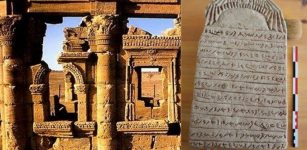 Ancient Napata And Meroe Kingdoms Reveal Secrets Of Queen Tiye And Goddess Maat
Archaeology | Mar 7, 2018
Ancient Napata And Meroe Kingdoms Reveal Secrets Of Queen Tiye And Goddess Maat
Archaeology | Mar 7, 2018 -
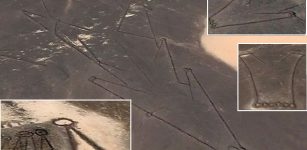 400 Mysterious Stone Formations That Could Be 7,000 Years Old Spotted In Google Earth Satellite Images Over Saudi Arabia
Archaeology | Oct 19, 2017
400 Mysterious Stone Formations That Could Be 7,000 Years Old Spotted In Google Earth Satellite Images Over Saudi Arabia
Archaeology | Oct 19, 2017 -
 Nazar Amulet – Blue Color Wards Off The Evil Eye According To Ancient Belief
Ancient Symbols | Mar 13, 2018
Nazar Amulet – Blue Color Wards Off The Evil Eye According To Ancient Belief
Ancient Symbols | Mar 13, 2018 -
 Peace Of Callias – A Treaty That Ended The Greco-Persian Wars
Ancient History Facts | May 15, 2019
Peace Of Callias – A Treaty That Ended The Greco-Persian Wars
Ancient History Facts | May 15, 2019 -
 Little-Known Mummy Fragments Analyzed By Scientists
Archaeology | Jan 3, 2024
Little-Known Mummy Fragments Analyzed By Scientists
Archaeology | Jan 3, 2024 -
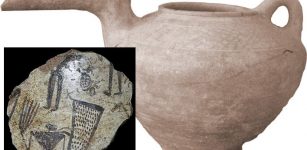 7,000-Year-Old Tepe Ozbaki Mounds Yielded Valuable Relics – But Now The Site Is In Trouble
Archaeology | Nov 25, 2020
7,000-Year-Old Tepe Ozbaki Mounds Yielded Valuable Relics – But Now The Site Is In Trouble
Archaeology | Nov 25, 2020 -
 Kanishka Casket – Beautiful Ancient Buddhist Treasure In Gilded Copper
Featured Stories | Jun 14, 2021
Kanishka Casket – Beautiful Ancient Buddhist Treasure In Gilded Copper
Featured Stories | Jun 14, 2021 -
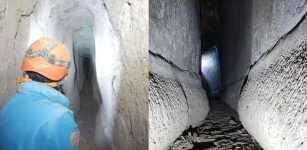 Giant Ancient Roman Underground Structure Discovered Near Naples, Italy – Aqua Augusta Investigated
Archaeology | Feb 6, 2023
Giant Ancient Roman Underground Structure Discovered Near Naples, Italy – Aqua Augusta Investigated
Archaeology | Feb 6, 2023 -
 Controversial Ruler Tsar Boris Godunov’s Exact Date Of Birth Determined By Scientists
Archaeology | Aug 31, 2021
Controversial Ruler Tsar Boris Godunov’s Exact Date Of Birth Determined By Scientists
Archaeology | Aug 31, 2021 -
 Untold Story Of Mexico’s Ancient Giant Indians – Secret Knowledge Of The Aztecs Revealed – Part 1
Featured Stories | Sep 21, 2019
Untold Story Of Mexico’s Ancient Giant Indians – Secret Knowledge Of The Aztecs Revealed – Part 1
Featured Stories | Sep 21, 2019 -
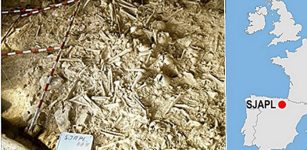 Earliest Period Of Warfare In Europe Occurred Over 1,000 Years Earlier Than We Thought
Archaeology | Nov 3, 2023
Earliest Period Of Warfare In Europe Occurred Over 1,000 Years Earlier Than We Thought
Archaeology | Nov 3, 2023 -
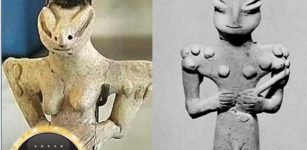 Ancient Reptilian-Like Humanoids Hold Secrets Of Mankind’s Origin
Artifacts | Apr 12, 2014
Ancient Reptilian-Like Humanoids Hold Secrets Of Mankind’s Origin
Artifacts | Apr 12, 2014 -
 10 Enigmatic Ancient Underwater Ruins – Our Oceans Are Full Of Secrets
Featured Stories | Aug 13, 2019
10 Enigmatic Ancient Underwater Ruins – Our Oceans Are Full Of Secrets
Featured Stories | Aug 13, 2019 -
 Invisible Ink On Antique Nile Papyrus From The Island Of Elephantine – Revealed
Archaeology | Aug 21, 2019
Invisible Ink On Antique Nile Papyrus From The Island Of Elephantine – Revealed
Archaeology | Aug 21, 2019 -
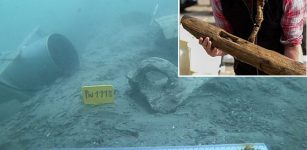 Slovenia’s Unique Discovery Of Masts, Sails And Small Harbor Found At The Bottom Of The Adriatic Sea
Archaeology | Apr 2, 2024
Slovenia’s Unique Discovery Of Masts, Sails And Small Harbor Found At The Bottom Of The Adriatic Sea
Archaeology | Apr 2, 2024 -
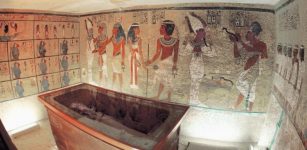 Non-Invasive Radar Will Search King Tutankhamun’s Tomb For Nefertiti’s Hidden Crypt
Civilizations | Sep 24, 2015
Non-Invasive Radar Will Search King Tutankhamun’s Tomb For Nefertiti’s Hidden Crypt
Civilizations | Sep 24, 2015 -
 Archaeologists uncover new Yup’ik artifacts near Quinhagak, Southwest Alaska
Artifacts | Aug 28, 2015
Archaeologists uncover new Yup’ik artifacts near Quinhagak, Southwest Alaska
Artifacts | Aug 28, 2015 -
 The Mystery Of The Serpent Seed
Biblical Mysteries | Jul 19, 2019
The Mystery Of The Serpent Seed
Biblical Mysteries | Jul 19, 2019 -
 Trove Of Coins Dating Back To The 1100s Found On Visingsö, Sweden
Archaeology | Apr 8, 2024
Trove Of Coins Dating Back To The 1100s Found On Visingsö, Sweden
Archaeology | Apr 8, 2024 -
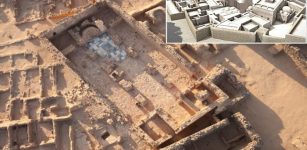 Virtual Nubia: Sudan’s Medieval Monasteries Digitally Reconstructed By Polish Archaeologists
News | Oct 8, 2020
Virtual Nubia: Sudan’s Medieval Monasteries Digitally Reconstructed By Polish Archaeologists
News | Oct 8, 2020

